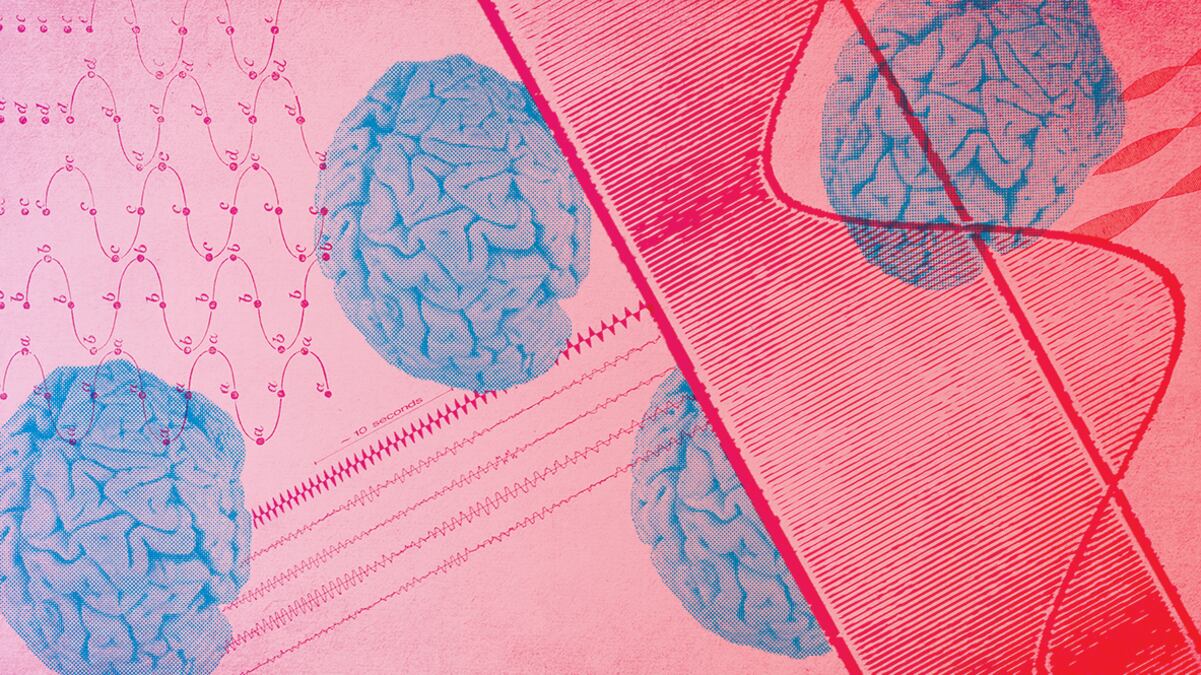To the uninitiated, neurofeedback—commonly abbreviated as NFB and also known as neurotherapy—can look like something out of an early science fiction film.
Typically, a patient sits facing a monitor with a tangle of sensors attached to their head. These sensors detect the small brain wave signals emanating from the scalp (Delta, Theta, Alpha, SMR, Beta and Gamma, in order of ascending frequency) and then feed these signals into an amplifier. That amplified signal is then recorded by a computer, which displays the patient’s brain wave information on a second monitor for the doctor.
At first blush, the entire procedure might seem a bizarre cross between a polygraph test and a mind-reading device, but nothing sinister is actually occurring here. Dr. John McManus, who administers neurofeedback at his Lake Oswego practice, even employs a lighthearted analogy when attempting to describe the treatment in “the least scientific way possible.”
“Basically, I’m teaching you how to play this guitar called your brain,” McManus says. “Play those six different frequencies so that they are now producing the music that you want. That’s about as easy of an explanation as I can come up with for what we’re doing.”
Neurofeedback’s proponents suggest certain psychiatric disorders stem from aberrant brain wave activity. The treatment itself aims to encourage some types of brain wave activity and discourage other types through reward-based conditioning. For instance, McManus says a treatment plan for a patient with an attention disorder might be geared toward rewarding Beta, a higher-frequency brain wave associated with feelings of arousal, and blocking Theta, a low-frequency brain wave associated with daydreaming or passive mental states.
The way this reward system works varies slightly among different neurofeedback clinics, but it almost always involves a patient interfacing with an image on a monitor. Older neurofeedback software was more expressly gamelike—a helicopter would scroll across a screen, for example, corresponding to the patient’s brain wave patterns; when it fell below a specified altitude, the patient would be subjected to an irksome “ding,” unconsciously encouraging them to normalize their brain wave activity.
A typical neurofeedback session is probably a little less mind-numbing today. Atari 2600-style representations of action scenes have been replaced by actual films.
“If you create the frequency that I’m trying to reward, the volume of the movie goes up, and if you don’t produce that frequency, then the volume goes down,” McManus says. “Also, the screen will shrink or grow larger depending on how much Theta frequency you’re producing. We’re trying to reduce Theta, increase Beta, and that’s kind of the standard protocol for [treating attention deficit hyperactivity disorder]. And for other conditions, like anxiety, we’re training more in the Alpha range. So the condition you’re trying to treat determines which brain waves we’re going to reward or inhibit.”
Modern neurofeedback was “popularized”—if you could call it that—in the 1960s. Dr. Barbara Brown coined the term “biofeedback”—a family of treatments that monitor and modulate autonomic biological processes—and had her own colorful, albeit comically outmoded, analogy for it, likening the process of brain wave modification to the relays on a functioning train.
Dr. Barry Sterman was the first to effectively treat epilepsy and attention disorders with neurofeedback, paving the way for future neurotherapists like McManus.
“He did his original research with cats and trained them to relax and focus, and then exposed them to a chemical agent,” McManus says. “The cats who had been trained with neurofeedback actually went into seizures at a lower rate than the cats who weren’t treated.”
Before becoming a neurotherapist, McManus worked with patients who suffered from adult ADHD, a condition he shares: “And they started bringing in literature about neurofeedback, so I decided to explore it. I was able to train myself to no longer need Ritalin. I noticed I was on the right track. If it worked for me, it would work for others.”
Despite an endless number of anecdotal endorsements and a huge volume of supportive research on the effectiveness of neurofeedback compiled by the International Society for Neuroregulation & Research, the medical community remains skeptical.
“With good cause,” McManus concedes. “They don’t want to recommend a therapy that doesn’t have a scientific basis.”
And even though it’s been around for decades and is relatively noninvasive, neurofeedback doesn’t possess the crystal-licker cachet of acupuncture, chiropractic and naturopathy. It’s also no surprise that most insurance companies are reluctant to foot the bill—especially since the requisite number of sessions falls somewhere between 20 and 40.
It might be hyperbole to suggest neurofeedback is on the cusp of having a moment, but neurofeedback apps and equipment starter kits have cropped up online in recent years, giving patients the opportunity to experiment with the treatment before committing to the real deal.
“It can be very expensive,” McManus says, “but I think I view that as an investment in my health, and I’m worth the investment. It’s my well-being, my productivity, and my own sense of calm and peace with myself.”
